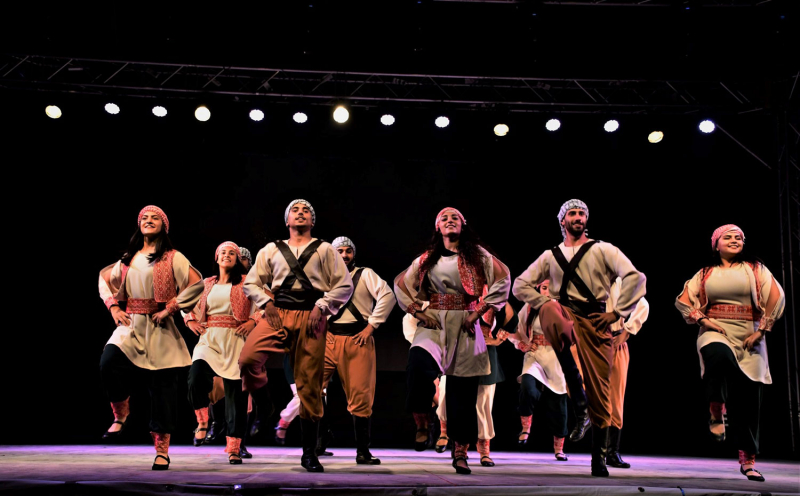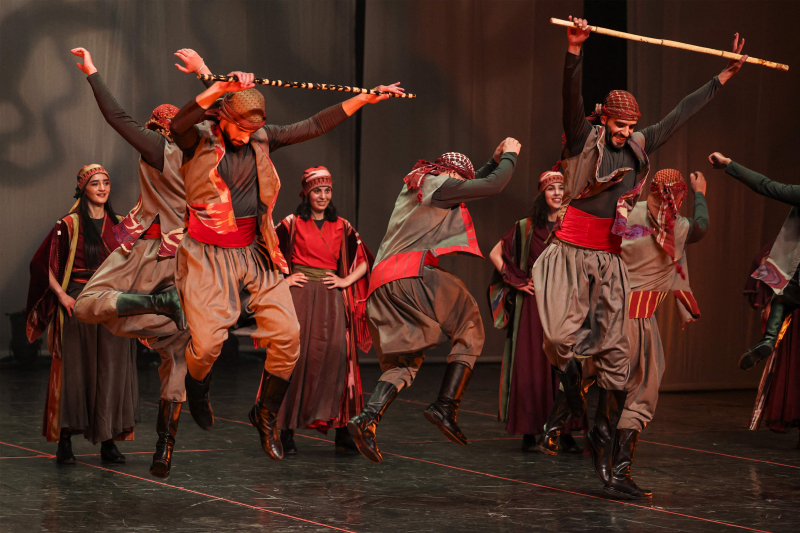Tradtional Dance
Traditional dance is a staple of celebratory events in Palestine and anywhere where Palestinians reside. Some refugee camps have dance groups where youth practice dabke — the traditional Palestinian folk dance that is also popular in Syria, Lebanon, and Jordan.
Dance adds a large dose of fun to any gathering. Guests are sure to break out into this line dance at joyous occasions like weddings and other parties, and some dancers even form troupes and compete against other dancing troupes. The dabke dance form includes synchronized stomps and movements.
There are dozens of variations of dabke in the Levant, including al sahja (السحجة), a popular Palestinian and Jordanian dance that belongs mostly to northern and central Palestine, and, in southern Palestine, al samir (السامر) and al dahiyya (الدحية). These dances are often held on the night before a wedding party, with most of the men participating. Al samir involves two rows of men on opposite walls, competing with folk poetry. Al-Dahiyya is a Bedouin version of the same kind in which there is a professional dancer who dances between the two opposing walls of men who are competing for her attention, and at times give her money.











